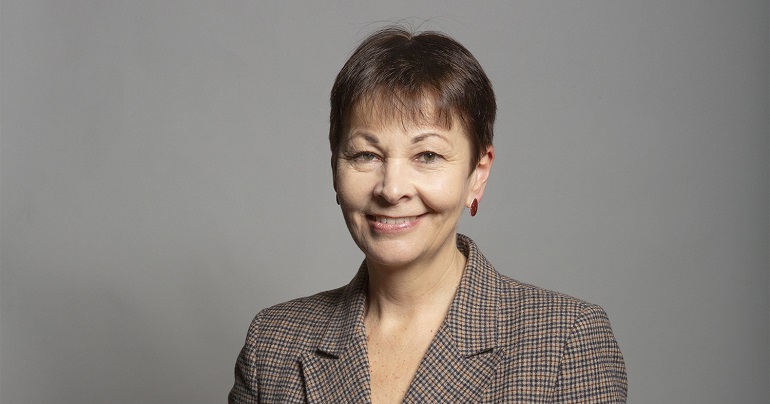Will the Green Party retain control of Brighton & Hove Council?

The 2023 local elections are the most important in the history of the Green Party of England and Wales. In May, the Green Party will be defending over 200 council seats and has ambitions to gain at least 100 more. If the party pulls this off it will be historic and would confirm that the Greens are a major force in local government for the long term. In the run up to these elections, Bright Green is taking an in depth look at some of the councils where the results could be the most interesting and significant for the Green Party.
If most people in England were to associate a specific place with the Green Party, it would be Brighton & Hove. It is the city that made history in 2010 by electing Caroline Lucas as the first ever Green MP. The following year, it made history again by electing the first Green Council – albeit short of a majority. Unsurprisingly, therefore, when looking at the prospects for Green success in this year’s local elections, we need to look at Brighton & Hove.
The thing about Brighton & Hove Green Party is that its members are a lot more jittery than other local parties. The other local parties I’ve spoken to in researching for this article series – Lancaster, Mid Suffolk, Herefordshire and others – have been brimming with confidence about this year’s elections. In Brighton & Hove, activists are much more cagey.
This could be down to the tight messaging the councillor group has developed in recent years. It could be down to the fact that Labour is mounting a fierce campaign within the city. But it is also quite likely due to Greens in Brighton & Hove being almost unique in having experienced both the highs of electoral success and the lows of electoral collapse.
As mentioned above, the Green Party took minority control of Brighton & Hove in 2011, taking 23 seats. After a somewhat tumultuous time in administration, the Greens lost more than half their seats in the 2015 local elections, finishing up with just 11. While the party has had an effective recovery and are back in administration now, these ebbs and flows create a nervousness among the local party, its activists and councillors.
Local activists say that this year’s elections are going to be extremely close, with both Labour and the Greens making gains. There is still a significant Tory presence in Brighton & Hove, and it is Rishi Sunak’s party that look likely to lose out to the two parties jostling for the council leadership.
Who can win the most seats from the Tories is likely to be crucial in determining the final arithmetic that decides who runs the council. But also key will be whether the Greens can take seats from Labour or vice versa.
In that regard, Labour have been bullish about their prospects this year. Some within the party have even been suggesting that they could win a majority on the council, something no party has achieved for 20 years. Their campaign has been substantial, with additional resource injected into it through a string of visits by the likes of Eddie Izzard, shadow chancellor Rachel Reeves and Portsmouth MP Stephen Morgan. A surging national poll lead is no doubt buoying the sense of insurgency.
Nevertheless, local Green Party activists tell me it is “unlikely” Labour will gain any Green seats. That’s despite a nervousness among some ward campaign teams about revised boundaries and tricky local issues making things slightly more challenging. They say that Labour’s claims of gaining majority control of the council is hubristic, arguing that a key dynamic in the city is not surging enthusiasm for Labour but a complete collapse in the Conservative vote combined with increasing hostility to politics in general.
Anecdotally, having spent a small amount of time on the campaign trail in Brighton, I found little evidence to support the idea that support for the Greens is dissipating or evaporating. Speaking to campaigners who have travelled from outside the city to help within Brighton & Hove, they talk much more enthusiastically about the response they get on the doorstep than those from within it do – coming back to the jitteriness within the local party.
And despite the reticence to make bold predictions or claims about potential success like other local parties do, the Greens in Brighton & Hove are hopeful that their record in administration and their targeted campaigning will see the party win seats not only from the Tories, but also from Labour.
As the current Green Party leader of Brighton & Hove City Council Phélim Mac Cafferty told Bright Green: “Greens are united in our commitment to our communities and firmly focused on the important local issues affecting our city. Protecting the most vulnerable, creating jobs, opportunities and apprenticeships; helping to build a cleaner, healthier and greener city fit for the future. Our manifesto demonstrates just some of what we’ve managed to do in only two years. Imagine what Greens could achieve over the next four. When you vote Green on Thursday 4th May, you vote for action: action on the climate crisis, and for a fairer Brighton and Hove.”
Against the backdrop of more than a decade of austerity and the hollowing out of local government finances by Westminster, building an effective narrative around the successful running of councils is difficult. This is something Green councillors in Brighton & Hove understand keenly. But overall, they say that their time in office is getting a positive reception from voters – especially their handling of the city during the Covid-19 pandemic. No doubt that is something the other parties would dispute. Who is correct will become apparent sooner rather than later.
PS. We hope you enjoyed this article. Bright Green has got big plans for the future to publish many more articles like this. You can help make that happen. Please donate to Bright Green now.
Image credit: Jon Craig – Creative Commons




As an active member of B and H Green Party the results were most disappointing losing so many seats at a time of a national swing to the Greens We do need a review of what went wrong possibly from a national level We need to understand this experience for the future of the GP in office in other councils I do not intend to give my views about what went wrong other than to say many members were worried about the way the council for all its good work was perceived by many voters as not dealing well with some basic issues e.g Public toilets The LP worked on publicising and magnifying these issues to give the impression of an incompetent uncaring council.
But there are many other views about why we lost so badly
“And despite the reticence to make bold predictions or claims about potential success like other local parties do, the Greens in Brighton & Hove are hopeful that their record in administration and their targeted campaigning will see the party win seats not only from the Tories, but also from Labour”.
So, how do you explain such a drumming and Labour’s success when local parties elsewhere have taken control of a council for the first time ever with a comfortable majority AND in Tory land?
Lessons have to be learnt. Defeated Brighton Greens must be honest, start somne serious self-reflecting and share the outcome of those reflections. Or the party as a whole will learn nothing and we will pay the price big time at the next GE.
🙁 Nope. Lost 13 councillors. Very bad news.
Something went really wrong in Brighton. We need an hoest assessment of what was.
Oh well, don’t give up the day job sir, Labour landslide